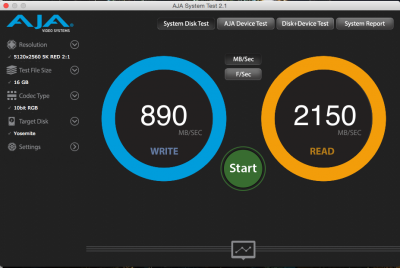- Joined
- May 28, 2013
- Messages
- 60
- Motherboard
- RIVE
- CPU
- 3930K
- Graphics
- GTX 780
- Mac
- Classic Mac
- Mobile Phone
I'm not using USB to boot just using my UEFI partition. The trick was to get the driver from the USB stick and put it in the UEFI partition. Because only BiosBlockIO from clover installer will install the efi driver for some reason its not a option for EFI only during the clover installer. Here is a copy of paste of a old post from another thread.The Intel SSD 750 PCI Express Cards works with the macvideocards driver. I have the latest BIOS installed that suggests Shilooh.
What i did:
- Put nvme driver into the clover directory (in my case it is on a pen drive, without this step you wont be able to boot!)
- Switch off PC and unplug power,
- put PCI Express Card into slot 3 (i think) / I have a double slot graphic card on slot 1, then 1 empty double space slot and then the pci e from intel in slot 3, and then in slot 4 a wifi card.
- Switch on PC
- Restart the PC with control alt DEL from the clover menu
- Enter BIOS
- Move with the keypad arrows to the right where the pci intel should show up if it is not there in the bios there is something wrong (it should have its own PAGE like the intel ethernet)
- enable only EFI settings and set security setting to OS OTHER -> save
- Boot from pendrive into clover
- Select the intel ssd or boot into your installer to install the os x unto the intel ssd
Be blessed in Jesus name guys!
Yes I used a cheap PCIE 3.0 adapter. Getting advertised speeds on my 256gb 950 pro, which is a little slower than 512gb. But I'm confident you will get full speeds with RIVE and proper PCIE adapter even if you get 512GB drive. Here is my speeds for 256GB drive.

If you get 512gb you should get 1500 write 2300 read.
-------------- This is what I did -------------
Got my Samsung 950 pro. Install went well just updated clover. Then threw in NvmExpressDxe-64.efi into the 'drivers64UEFI' folder (even though the installer doesn't allow that, had to install it on a USB stick with BiosblockIO then get the driver NvmExpressDxe-64.efi and throw it in 'drivers64UEFI' folder). After that I threw the NVMeGeneric.kext into Kext folder for clover. Booted to a OS X installer USB stick used restore option with Disk utility to copy me oldssd install and booted up 950 pro just fine from the EFI boot loader on OldSSD. Then installed clover with EFI on the 950 pro, transferred over all my files from my clover folder under EFI partition from old SSD to 950 pro EFI partition. Now booting with just 950 pro with EFI.
I'm very surprised EFI boot works with my old board with no bios update. I still have my same 4.6ghz overclock running a much older 4205 bios version on Rampage IV Extreme x79 with 3930K (Sandybridge-E). This was not support to be possible. I see threads were people are having issues with it showing up as EFI drive. Other people says it shows up as PATA. But not mine it showed as EFI drive. Again this was with no bios mods, or bios updates, just same old bios been using for years. Clover EFI doing all the work
My speeds on old SSD were around 480 read and 410 write. Now doing 2050 Read and 880 write. I believe I'm getting these speeds only because the Rampage Extreme board is capable of PCIE 3.0. Not all boards will have the PCIE 3.0 but some of the higher end ones will for Sandy and Ivy.
What I find most impressive here is no bios update is needed if you have clover, NvmExpressDxe-64.efi in 'drivers64UEFI' folder with NVMeGeneric.kext in your Clover/Kext/10.x.x folder.
^ ^ ^ ^ ^ ^ ^ ^ ^ ^ ^
This might not be the most clear post but I can answer questions if need any. I think the major Bios setting that you might have different is CSM needs to be disabled.
I also just bought the cheap Red PCB adapter with two M.2 ports and SATA on back. That adapter is $24 on amazon or $8 on eBay slow shipping from china took 7 days.
